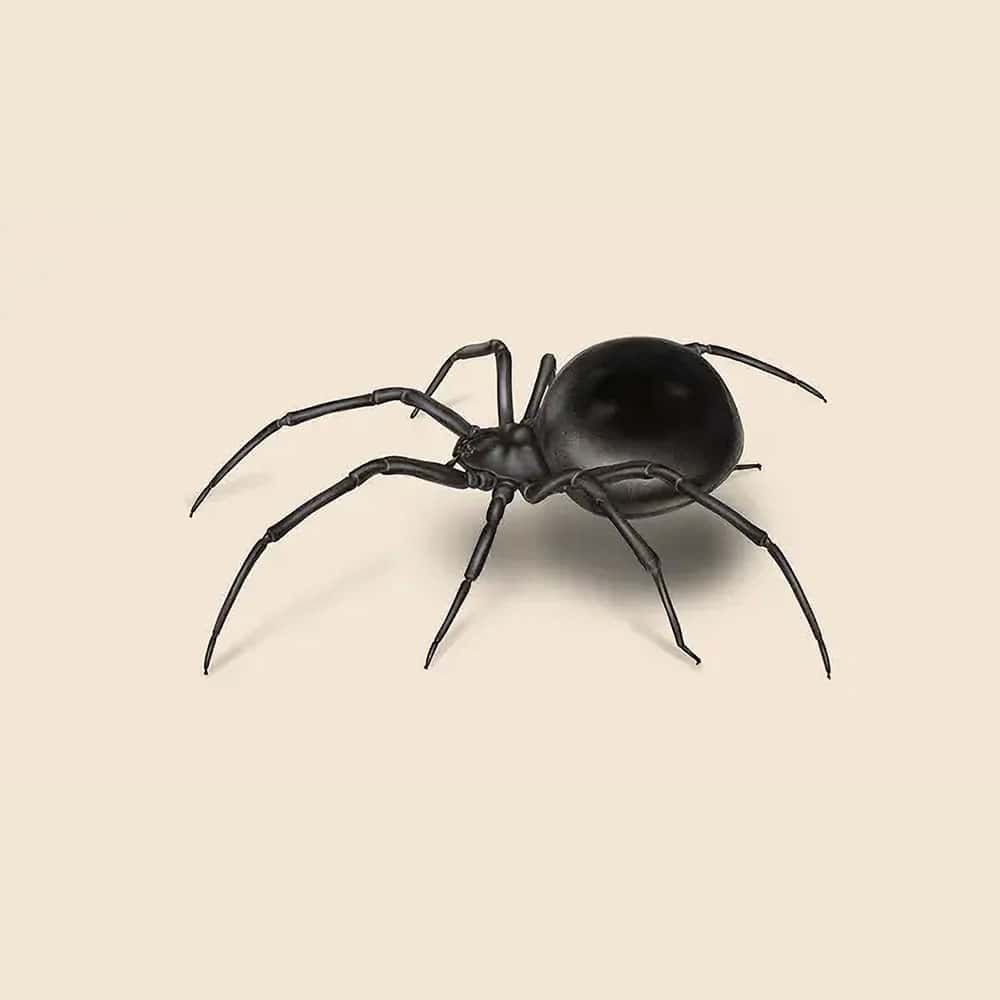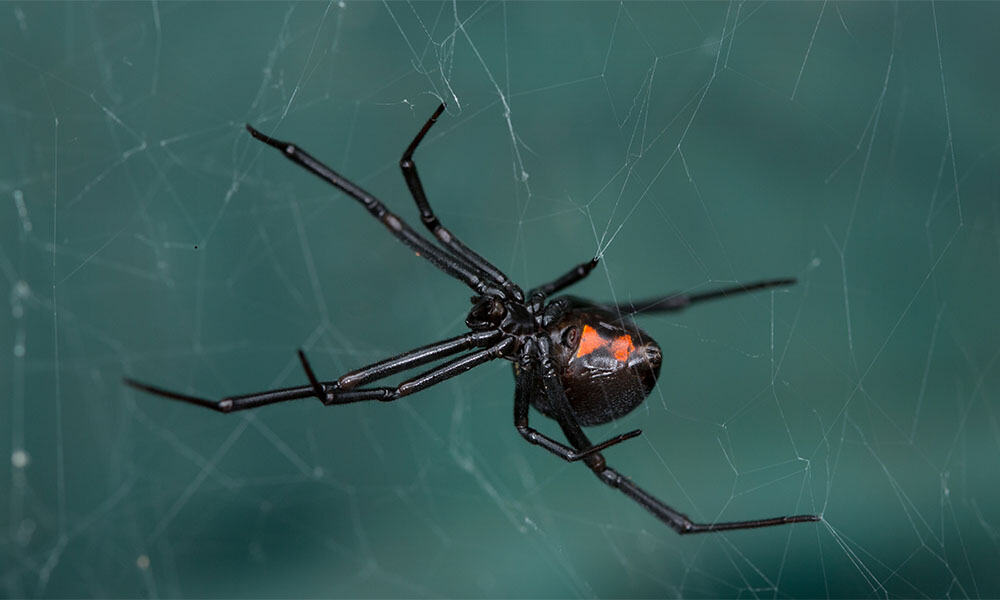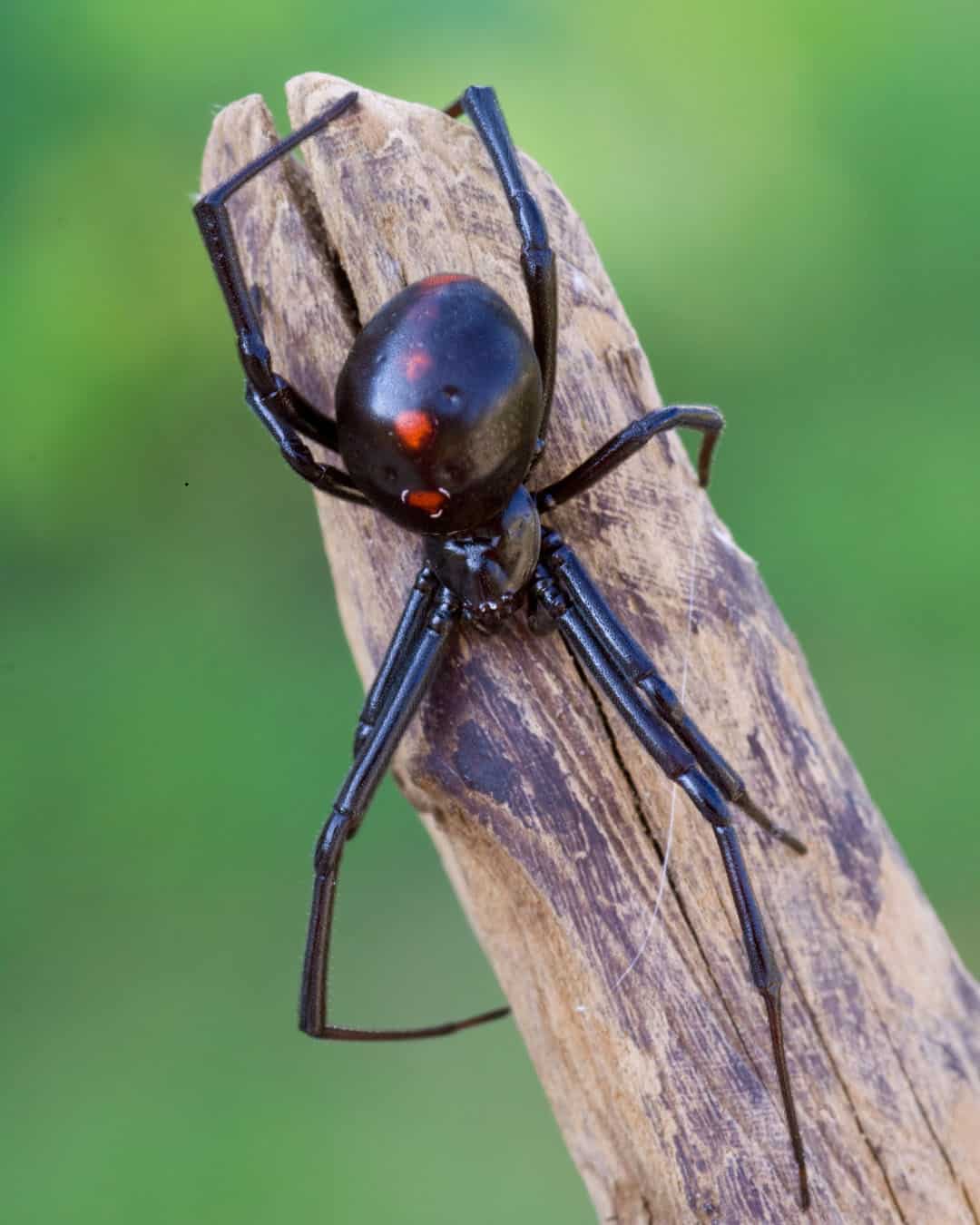Black Widow Spider Facts & Information
Black widow spiders, notorious for their venomous bite, can pose a significant health risk when they infest homes and properties. Recognizable by their shiny black bodies and a distinctive red hourglass marking, these spiders are often found in dark, secluded areas.

Latrodectus Spp
What You Need To Know About Black Widow Spiders
What do black widow spiders look like?
Black widow spiders are easily recognizable by their shiny, black bodies and distinctive red hourglass-shaped marking on the underside of their abdomen. Females are about 1.5 inches long, including their leg span, while males are smaller and less distinctive in appearance.
What do black widow spiders eat?
Black widow spiders feed on insects and other small arthropods. They capture their prey using their strong, irregular webs and then inject venom to immobilize it before consuming it.
What sort of habitat do black widow spiders live in?
Black widow spiders prefer dark, secluded areas close to the ground. They can be found in sheds, garages, basements, woodpiles, under rocks, and in dense vegetation. They often build their webs in undisturbed areas where they are less likely to be disturbed.
How do black widow spiders commonly behave?
Black widow spiders are generally solitary and nocturnal. Females are known for their potent venom and will bite in self-defense if they feel threatened. Despite their fearsome reputation, black widow spiders are not aggressive and usually only bite when provoked or accidentally disturbed.
Did you know this about black widow spiders?
The venom of a black widow spider is up to 15 times more potent than that of a rattlesnake, but their bites are rarely fatal to humans. Symptoms of a bite can include muscle pain, cramps, and nausea, and medical treatment is usually necessary. Interestingly, male black widows are much smaller and less venomous than females, and their bites are not considered medically significant. The name “black widow” comes from the female’s habit of occasionally eating the male after mating, although this behavior is not as common as once believed.
Understanding Black Widow Spider Infestations
Understanding black widow spider infestations is crucial for effective management. Black widow spiders prefer to spin their webs in undisturbed locations such as basements, garages, woodpiles, and sheds. They are nocturnal hunters, emerging at night to capture prey. While bites are rare, they can cause severe pain, muscle cramps, and other symptoms that may require medical attention.

How Hearts Handles Black Widow Spider Treatment
Hearts Pest Management employs an integrated pest management approach to handle black widow spider infestations. Our process begins with a thorough inspection to identify spider activity, potential entry points, and nesting sites. We then develop a customized treatment plan that may include habitat modification, exclusion techniques, and targeted insecticide applications, ensuring the safety and comfort of your home.
Black Widow Spider Inspection
Black Widow Spider Treatment
Black Widow Spider Prevention
Educational Resources

Think You Might Have a Black Widow Spider Infestation?
At Hearts Pest Control, we understand the challenges associated with Black Widow Spider infestations and are here to provide professional solutions tailored to your needs. Flourishing in warm and humid climates, they are prevalent in many regions, including San Diego County, Orange County, and Los Angeles County.